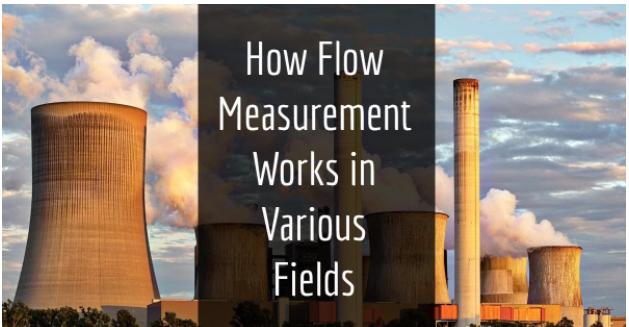Flow is referred to as the volume of the fluid that passes within a unit of time. When it comes to water sources, various Flowmeters are used to gauge the cubic feet flow per second. Other units used in flow rate measurement are gallons per minute and cubic meters per second. Here, you will learn how flow gauging works in many fields.
Magnetic Meter
The magnetic meters run by using a magnetic field to flow through the tube. That aids in coaxing a small electronic latent variation and can be gauged by electrode meters.
The extent of the potential electronic variation is the same as the velocity of the fluid, and flow is calculated using the continuity equation. One of this meter’s main merits is that its metering section is the same width as the next tube. That means that a magnetic meter does not cause any extra head loss. Magnetic meters are ideal for full pipe uses.
Venturi Meters
Typically, venturi meters gauge flow in full or force pipes by use of the venturi effect. That is made viable by using the linking section of the tube to cramp the flow. The linking section has a small area, which aids in achieving a higher velocity in the throat. That results in a force drop in the throat.
In venturi meters, flow rate gauging is achieved by gauging the force drop in the linking area using the Bernoulli law. Venturi sensors have force estimating ports that clog if used with wastewater form. That has made the meter to be more common in water forms than other meters.
Area-Velocity Meter
A-V meters are open channel meters that gauge the flow by making two separate depth and speed gaugings. The depth is typically turned into an area by the use of the geometry of the pipe.
As the name infers, the flow is calculated using the flow equation by adding the speed’s flow area in the A-V meter. The rate is gauged using the shone speed using the Doppler meter sound, which bounces ultrasonic waves off particles in the liquid. Usually, the velocity is estimated by the use of the Doppler shift in the mused sound sign.
A-V meter gauges the open channel flow in sanitary sewers. That is because the probes are a bit small, and they can be mounted on an existing sewer tube without causing head loss. Those traits also make it fit for short-term flow metering forms for sewer studies. One of the cons of this meter is that it has to be fixed in the fluid.
Transit Time Meter
The transit time meters were first invented in the oil trade to gauge flow in huge pipes accurately. It is also used in open channel flow for water metering forms. The sensor uses ultrasonic waves to assess the flow rate by sending the waves in meters found just a few miles from each other along the tube.
Transit time meters use the transit time of the sound waves to gauge the water speed. That is easy since the speed of sound in water is known. These meters are costly, collated with other sensors like Doppler meters. That is due to the various sensors involved as well as the intricate fitting. Yet, transit time meters are very accurate since they can slice the flow into cross sections, and they gauge speed across every area.
Primary Device
The primary devices gauge the open pipe flow using a structure such as a weir that helps in flow rate analysis using measuring depth.
The primary device works by forcing the path in critical depth like a crest of a weir. In a nutshell, critical depth is the drop that results in the unique least state for a specific flow.
Primary devices are ideal in gauging the flow rate since the depth can be measured from the top of the flow without the need to insert a sensor in the liquid. That explains why primary devices are more reliable than other devices. They are also very easy to keep.
Even though primary devices are the most accurate way to gauge flow in an open channel, they also have cons. One of the popular faults is that it can cause head loss and backwater in the system.
Final Thoughts
Did you know that flow is the third most gauged extent in the industrial sectors? It has a lot of uses, such as water flow in custom stations. Flow meters are used to know the flow rate measurement of various fluids. Ensure you don’t justify using a cheap sensor, but instead, you can choose a meter that will operate properly.
Author Bio
Naman Modi is a Professional Blogger, SEO Expert & Guest blogger at proteusind.com. He is an Award-Winning Freelancer & Web Entrepreneur helping new entrepreneurs launch their first successful online business.
